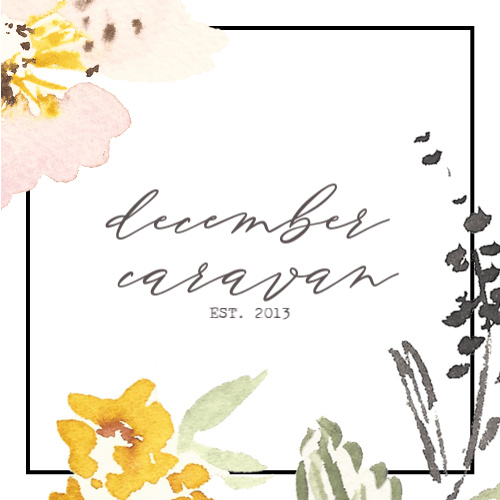“The essence of interior design will always be about people and how they live. It is about the realities of what makes for an attractive, civilized, meaningful environment, not about fashion or what’s in or what’s out. This is not an easy job.” - Albert Hadley.
These words are by the American interior designer Albert Hadley, who had a bold and distinctive style that completely changed how Americans see interior design, textiles, color, and function versus form. We don’t mean to over-intellectualize this post because the idea is to embrace your own style and execute your vision with guts and without holding back. The reason why we’re so passionate about this is precisely because of the quote at the beginning of this post. Design is all about how we live and how we move through our lived spaces besides.
Where we’re at right now as a society and a planet is a place that not many of us have been in our generations’ and lifetimes, and art, as it exists around us, is beginning to articulate a million lived experiences and doing so visually from all over the globe. This is undoubtedly having an impact on design, interior decorating, and lifestyle choices.
But how do you get to experience your own spaces in ways that visually articulate how you feel without breaking the bank?
We’re going to explore a few avenues that will help you create, coordinate and implement a redecorating plan to breathe a new, fresh air of creativity and design into your home.
CREATING YOUR DESIGN PLAN
Clearly, not everyone is a born designer, and this can sometimes put people off from taking chances with their design and decorating goals. It’s a real shame, too, because as much as those photos may look nice in glossy coffee-table magazines, how many of us actually live like that? Moreover, how many of us want to live like that. We have partners and children, pets and friends, and a life, and however you see your new home design plan working out, it has to start with how you engage and interact with your life around you.
If you have very young children, it’s probably not a great idea to have Lalique glassworks all over your living room, but you can have other types of artwork that are more durable as well as unique that won’t cause heart failure if they come into contact with your speeding 4-year old.
So at the very core of your plan, you need to incorporate choices. What choices are practically available to you, and which are best left for when your 18-year old leaves for college. It’s also a good time to mention the budget at this point. We fully support you going online and indulging all of your senses by getting inspiration from high-end and glossy publications. Still, if you don’t have the budget to back up those aspirations, your dream redesign is going to turn somewhat bitter before you’ve even started. So you must work a good dose of realism into your planning and vision-boarding from the beginning.
We find that a plan the encompasses the following three base elements works the best:
Scope, Possibility, Budget.
If you can manage to work through each room and space that you plan on refreshing and keep those three ideas in mind, you’re going to do OK. Remember that you don’t have to have it all at once; make this a living project that you can plan for overtime as and when your resources allow. Not only does this make the remodeling more realistic and achievable, but if you’re prepared to wait a little longer to get to your dream result, you’re also more likely to achieve it at all.
You can find a checklist template for beginners here.
DIVIDE & CONQUER
When you first get started with your design ambitions, it can be very, very tempting to try and take on too much at once. Those creative juices start flowing, and before you know it, your living room is uninhabitable, and you’re sharing your kids’ room with your partner. So based on the plan that you created before, take on the projects that will require the least amount of disruption, budget, and time and take that room on first.
This has two significant benefits: One, you’ll cause minimal disruption to your home, and two, you’ll get to practice your remodeling or design skills without considerable risk.
IDENTIFY EACH ROOM’S UNIQUE ELEMENTS
So each room that you’re planning on overhauling will come with a set of unique elements that already exist. You may or may not want to keep these but identify them before you make significant changes anyway. The reason for doing this is because it’s often easier to design around these elements and then use them as focal points than it is to break down and rip out - that has the added benefit of saving money and time too.
Think fireplaces, “nooks,” built-in cupboards or wardrobes, or double volume windows, or even ornate or hard-to-remove light fittings. All of these elements could become attractive with the right accessories or with some clever repositioning of furniture.
CHOOSING NEW FURNITURE, INSIDE & OUT
Depending on who you ask, you’ll get different versions of advice when it comes to choosing furniture. Some designers insist that you know what furniture you want first and then design the room or space around it. At the same time, others think it’s wiser to wait until the end, thereby giving you more freedom of choice when it comes to things like wallpaper or lamps, accessories, or drapes. The truth is much simpler than that - you decide.
With that being said (yep), it helps if you have some idea of your furniture preferences, even if that’s not cast in stone. Do you like modern contemporary furniture or classic Chesterfield styles? What’s an outdoor sectional, and how could it add style and functional value to your goals?
An important consideration to keep in mind is how “trendy” you mean to be? Do you want a space with the latest fittings and appliances with creative and exotic textiles to contrast and complement each other? Do you even care what the magazines say you should care about and how much of your personality would you want in your choices, if at all?
Now, no “one” outcome here is more valid than any other it’s your space, and you must live in it, but it’s still worth keeping this in mind.
FINANCIAL PLANNING
We might as well get this out of the way, but you must know that nothing great was ever achieved without enthusiasm...and an accountant. Or, at the very least, a sound mind for numbers.
The golden rule is this: the longer you’re prepared to put into your project’s planning phase, the more you’ll have to spend on what you really want. So take the time to solidly understand your whole plan, room by room and corner by corner, and always (and we do mean always) add an “ancillary” column because you’re going to need it. Roughly around ten percent of your overall budget should be put into that column, and once you have a good idea of how long your project will take to see to completion, you can start your financial planning.
Remember that your budgeting and saving should start around 3 - 6 months before the planned start date of your first room. You can also figure out how much disposable income you can allocate to your project once you’ve started with your project and how much you can assign to those luxury purchases.
ON A SLIGHTLY MORE SERIOUS NOTE
Everyone’s reasons for redecorating are as personal as they are. Sometimes it’s just because you want or needs a change, while other times can hold a little more gravitas. Redecorating and remodeling your home can help you and your family move on after experiencing loss caused by death or divorce or a significant life event.
Think about this before you start the process because if you want to create change due to grief or loss, you’ll also want your children to be a significant part of the decision-making. Here you can create unique spaces for prayer or reflection, for example.
LIVING YOUR BEST LIFE
However, you decide to bring it all together and thrive in your new spaces, take a moment to salute your efforts. Be bold, fearless, contemplative, traditional, sophisticated, rustic, vintage, minimalist, but whatever you do, be the most you that you can be.
We’re all about living graciously, gorgeously, honestly, and holistically and we hope you’ll discover that too.
It’s been a year and a half that no one will ever forget, and as we’re preparing to end this year, perhaps a little redesigning will help your family put this year where it belongs, in the past. But, while you’re getting ready to welcome in the winter months, take some time to rock your attitude of gratitude and, despite everything, end this year with a bang.





.jpg)






Post a Comment